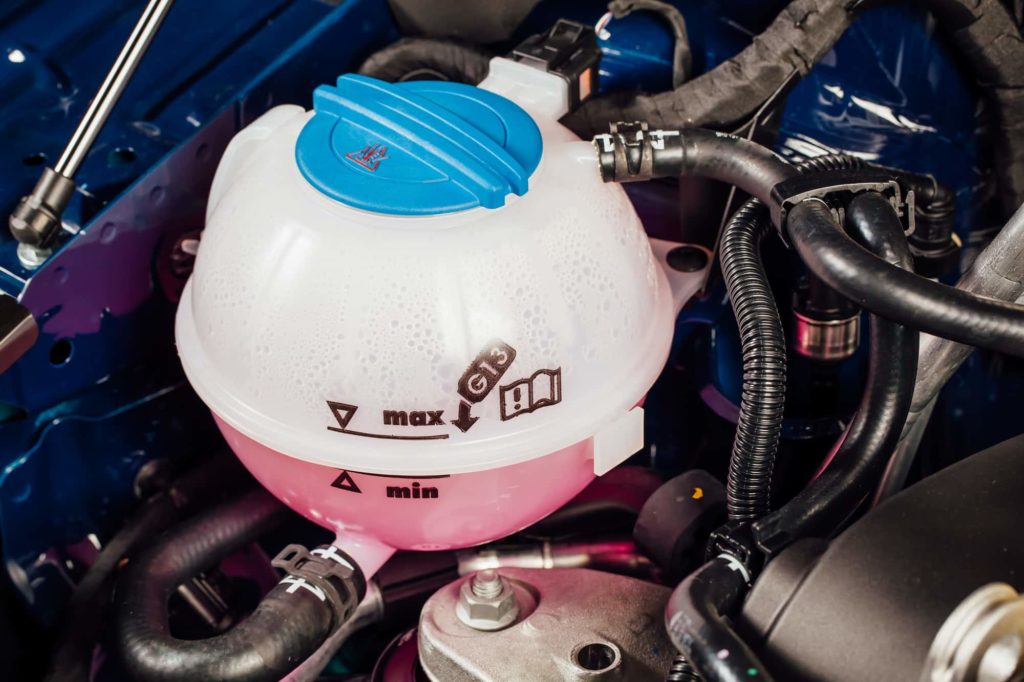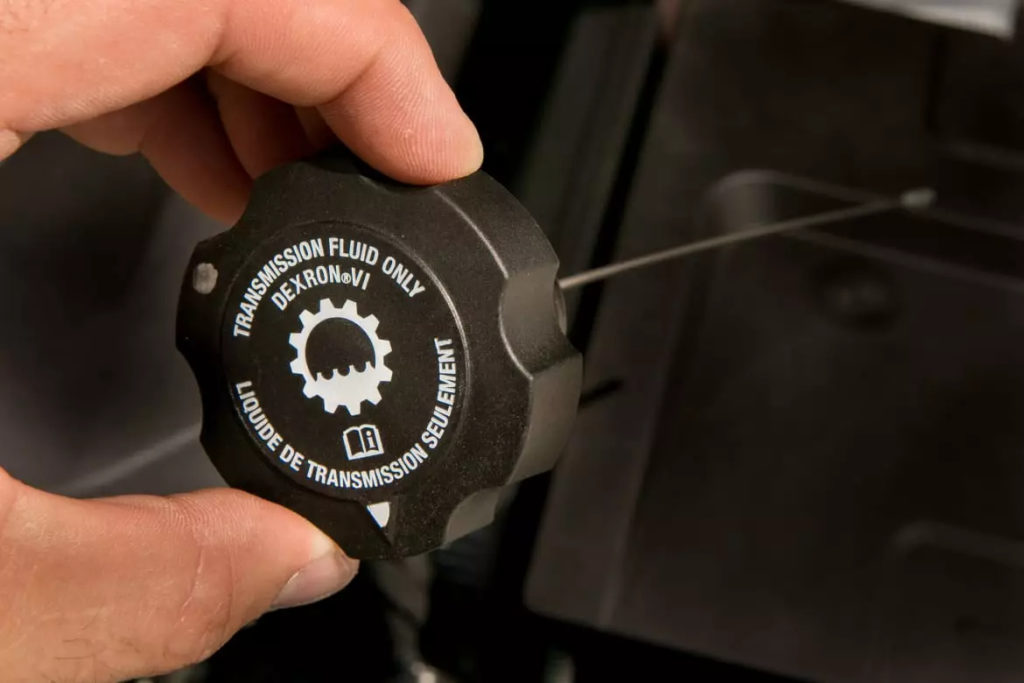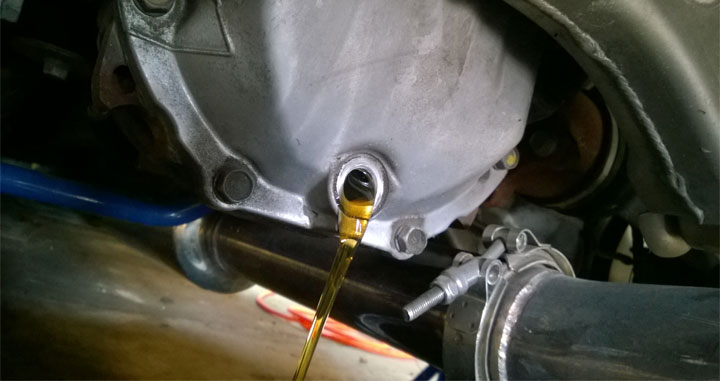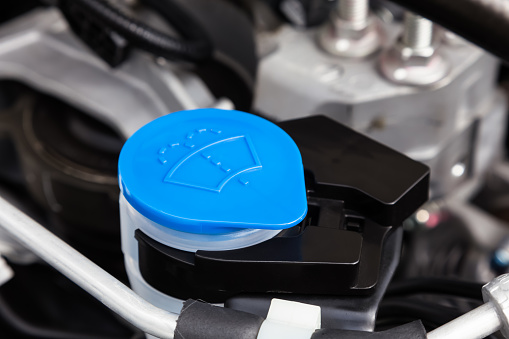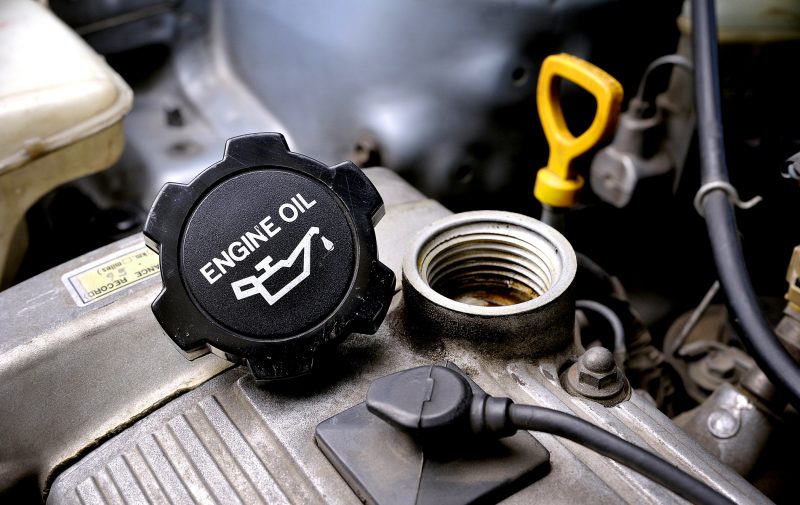
A modern automobile is a complex assembly of tens of thousands of parts that are precisely engineered and constructed together to provide a vehicle that will hopefully be reliable over hundreds of thousands of miles and many years of use in a wide variety of conditions. When most people think about how a car functions, aside from the fuel and windshield washer fluid, often the fluids in a vehicle are overlooked, or at least underappreciated, for the vital role they play in getting you safely to your destination. The many different fluids used in a car play a critical function in keeping moving parts lubricated, providing the transfer of force for operations like braking, and keeping temperatures regulated so that vehicle systems don’t wear out prematurely or fail entirely. As a car owner, one of the easiest and most important things you can do to keep your automobile healthy and avoid breakdowns is to monitor your vehicle’s fluid levels on a regular basis. In this article, we will review the important fluids in your car that need to be monitored, how to check their levels and condition, and discuss what can be done at home versus what jobs are best left to a professional mechanic.
WHAT FLUIDS ARE USED IN CARS?
The most common fluids used in modern automobiles are as follows:
- Engine Oil
- Coolant
- Transmission Fluid
- Differential Fluid
- Clutch Fluid
- Brake Fluid
- Washer Fluid
Depending on the design of specific vehicle, all or most of these fluids will be used and the methods for checking their levels and condition may vary. Most vehicles on the road today will have some method for an owner to manually check on the fluids through the use of a dipstick or markings on a transparent fluid reservoir. However, as time goes on, more and more of this monitoring is being assigned to the vehicle’s computers. In some modern luxury cars, there may be no way to manually check the fluids and you will be completely reliant on the computer providing status messages and warnings. Similarly, in electric vehicles, many vehicle components are being redesigned to operate fully electrically and they may not utilize fluids in their operation. For the purposes of this article, we will be referring to traditional internal combustion vehicles that allow for owners to manually monitor the fluids.
ENGINE OIL
In an internal combustion engine, engine oil is used to provide lubrication and reduce friction between the fast moving internal parts of the engine. Perhaps most importantly, the engine oil provides lubrication between the pistons and the cylinder walls, which are an extremely precise fit in order for the engine to generate power efficiently as part of the combustion process. Without engine oil, the pistons and the cylinders would be in contact without any lubrication and the friction would quickly wear down both parts and generate excessive wear that would lead the parts to break and the engine to eventually seize. Often, this type of occurrence is catastrophic and requires a full engine rebuild or replacement. Thus, it is crucial to regularly monitor and change your engine oil to keep it at optimal levels and make sure the oil is fresh and clean for proper lubrication.
Engine oil is usually measured with a traditional dipstick, which is most often a long metal rod with a handle that gets inserted through a tube which guides the end of the dipstick into the oil pan. On the bottom end of the dipstick ( the opposite end of the handle), there will be markings imprinted on it (e.g. “Min/Max”, “L/H” or hashmarks) or stamped into the metal (e.g. two holes) that show a range where the oil level should fall. When checking the oil yourself, first reference your owner’s manual to see if the manufacturer recommends to check the oil level while the engine is cold or warm. (WARNING: if recommend to check while warm, wear gloves and be careful not to burn yourself on the engine!)
With the engine off, open the car’s hood and locate the dipstick. Pull the dipstick out from the engine and wipe away any oil. Then reinsert the dipstick all the way back into its tube and then pull it back out one more time. Now look at both sides of the dipstick to check where the oil is on the bottom end in relation to the markings. If the top of the oil on the dipstick is between the markings, then your engine has the correct amount of oil. If the oil is below the ‘minimum’ marking, you will need to add additional oil or, if uncomfortable, have your car towed to a mechanic or oil change facility immediately.
While checking your oil level, this is also a great time to check the color of your oil, which is an indicator of the oil’s condition. Healthy engine oil should appear brown or black with no shiny metal flakes. If the oil is light or milky in appearance, you may have a coolant leak in your engine that needs to be immediately addressed and you should have your car towed. If there are metal flakes visible, an engine part is damaged and you should consult with a mechanic immediately. If everything looks okay, reinsert the dipstick back into its tube, make sure it is pressed all the way in, and you are good to go.
There are many different types of engine only and it is important that you use the type of oil recommended by the vehicle manufacturer (e.g. “5W-30 Synthetic”). This information can be found in the owners manual and sometimes is printed on the engine oil fill cap. If you need to add more oil after checking the dipstick, you can purchase a quart or two at your local auto parts store or gas station. The fill cap for the engine oil is usually located on the top of the engine and clearly marked (WARNING: if you are unsure that a fill cap is for engine oil, DO NOT PROCEED). Unscrew the cap and either carefully pour in the oil or use a funnel. It is best to add more oil slowly, adding just a bit at a time and checking frequently with the dipstick to ensure that you do not overfill. Allow about a minute after adding oil each time to check the level on the dipstick. When finished, simply screw the oil cap back on firmly and you are done.
COOLANT
As you are likely aware, coolant is a fluid that circulates around your engine to prevent the motor from overheating and being damaged. This is a critical function and an engine that overheats will quickly suffer from serious damage. The easiest way to check your coolant levels on most modern cars is by inspecting the coolant overflow reservoir, which is typically a clear or translucent plastic container (sometimes with a thermometer image printed on it). While the engine is turned off and cooled down, locate the reservoir and look for markings that indicate ‘high’ and ‘low’ fill levels (they may just be notches or lines molded into the plastic). If the level looks low and the engine is cold, you can simply remove the top of the reservoir and add coolant up to the desired level.
One important thing to note is that there are different types of coolant and some are specialized for certain makes/types of vehicles or weather conditions. Be sure to consult your owner’s manual before purchasing the coolant. Some coolants may come pre-diluted (e.g. “50/50”) and it is important to match the coolant with the requirements of your specific vehicle.
WARNING: never open a radiator cap while the engine is hot. The coolant is pressurized while heated and you will release an eruption of scolding hot fluids that can severely burn your skin or cause eye damage. If you own an older vehicle where the owner’s manual states to refill coolant directly into the radiator, always make sure the engine has completely cooled down before carefully opening the radiator cap. Additionally, if directly filling into the radiator, after filling you may be instructed to leave the cap off while the engine runs for a duration of time. This allows the coolant to circulate and purge any air from the system. Air bubbles in the coolant system may prevent the system from operating properly and lead to overheating.
If you are ever in a pinch, such as in a remote location, and your engine’s temperature is rising due to low levels of coolant, you can usually use distilled water as a temporary measure to bring the coolant levels back up to an appropriate level. This should NOT be attempted in freezing conditions, as the water can freeze, expand and severely damage your engine. If you must use distilled water, you should have your coolant system flushed and filled with fresh coolant after you safely reach your destination.
TRANSMISSION FLUID
Similar to engine oil, transmission fluid is used to lubricate the moving parts inside your vehicle’s gearbox to ensure smooth operation and prevent premature wear. There is often a transmission fluid dipstick that is used in a similar fashion as the engine oil dipstick. Although it’s location depends on the layout of the vehicle, the transmission fluid dipstick is most commonly found towards the rear of the engine by the firewall. Some vehicles may have the fill tube obstructed by other engine parts that need to be removed first, in which case you should bring your car to a mechanic for help if you are uncomfortable doing so yourself.
With the engine turned off and cooled down, you can remove the dipstick, wipe it off, reinsert and then pull it out once more to check the level and condition of the fluid, as you would with the engine oil. Just like with the engine oil, the transmission fluid should appear clean with no metal flakes or inconsistencies of color. If your transmission fluid appears particularly thick, murky contains particulates, it is likely time to replace your transmission fluid and you should bring your car to a mechanic.
On most vehicles, there is a separate fill tube or reservoir with a cap where you are able to add transmission fluid. To do so you would follow the same slow and careful procedure as engine oil – adding a bit at a time and checking the level often with a dipstick to avoid overfilling. Transmission fluids are generally designed to last for very long periods of time and low levels almost certainly indicate that you have a leak somewhere.
It is also very important to note that there are different fluid types for automatic transmission (commonly referred to as “ATF”) and manual transmissions. Be sure to consult with your owner’s manual or mechanic before purchasing and adding additional fluid. If you do need to add more transmission fluid, you should schedule an appointment with a mechanic to diagnose the source of the leak(s). One telltale sign that you may be losing transmission fluid is that your automatic transmission is shifting slowly or more clunkily than normal while driving.
DIFFERENTIAL OIL
A differential is a mechanical device that allows the wheels on different sides of the car to rotate at different speeds. This function is important to keep the vehicle moving smoothly and maximizing traction in various conditions, such going around a corner or driving in slippery road conditions. Like with engine oil and transmission fluid, differential oil or fluid provides lubrication to the internal moving parts of the differential to allow smooth operation and prevent premature wear. The differential is a closed system and should not be losing any fluid unless there is a leak. Your owner’s manual will have a recommendation for the frequency which the differential fluid should be replaced based on mileage and time. While there may be a clear viewing port somewhere on the differential to visibly inspect the fluid level, but most often there is not and you will need to take your car to a mechanic to check, flush and refill the fluid.
BRAKE & CLUTCH FLUIDS
Unlike all of the fluids described above, clutch and brake fluid provide a different function in a car. These fluids are used to transmit hydraulic force to operate a mechanical action on the vehicle. In simplest terms, when you press on the brake pedal with your foot, brake fluid is used to transmit that force to the brake calipers or drums and apply braking pressure to slow the vehicle. Similarly, when you press on the clutch pedal, the clutch fluid is used to transmit the force to disengage or engage the clutch, which connects your engine to the transmission. What many people do not realize is that clutch and brake fluid are usually the exact same fluid and are often used in a shared ‘master cylinder’ with respective ‘slave cylinders’ for the brake and clutch systems.
The master cylinder will commonly have a translucent plastic reservoir where you can visibly inspect the fluid levels against the markings on the reservoir. This reservoir is most often located at the rear of the engine, against the firewall on the driver’s side of the vehicle. These reservoirs typically have a screw off cap that can be removed to add more fluid directly to keep it in the optimal fill range. However, one should note that it is normal for the fluid level to drop slightly over time as the brake pads wear out and this level can be used as an additional indicator that you may need to replace your brake pads soon. If the level is below the marked range and dropping very rapidly between checks, then you most likely have a leak and should take your car to a mechanic for inspection. You should also note that there are different types of brake fluid (e.g. “DOT4”) and you should always check your owner’s manual for the correct type of fluid to be used.
WASHER FLUID
If you’ve driven a car for any significant amount of time, you are almost certainly aware of the role that washer fluid plays in keeping your windshield clean to maximize your visibility and overall safety on the road. Washer fluid is available at most gas stations and convenient stores and usually is refilled with an easily located plastic reservoir and a pop-off fill cap. There are not any major precautions with washer fluid – simply make sure the engine is turned off and cooled down, then carefully pour the washer fluid into the reservoir up to the desired fill line.
FINAL THOUGHTS
Given the vital roles that fluids play in keeping your car running smoothly, regularly checking your fluids is one the easiest and best ways to keep your car healthy and on the road. Monitoring most fluid levels is something that even complete mechanical novices can do and it is a great way to get advanced notice that a problem may be brewing before it develops into a more serious issue. It is crucial that your fluids be kept at the optimal levels, that you do not mix up and add the wrong fluids to their respective system of the vehicle, and that you change your automotive fluids on the schedule recommended by the manufacturer. Whenever in doubt, it is best to contact a trustworthy independent mechanic for their expert advice.

